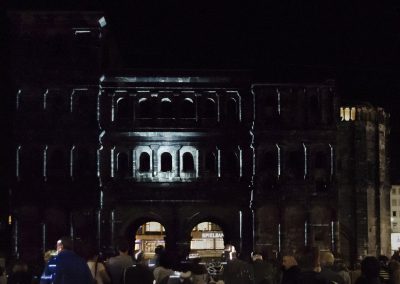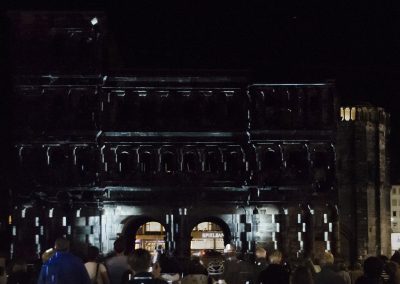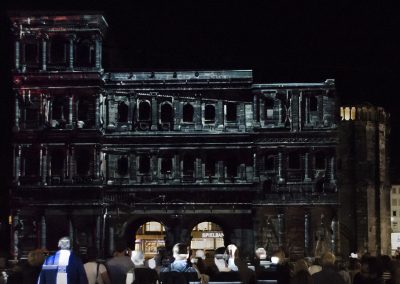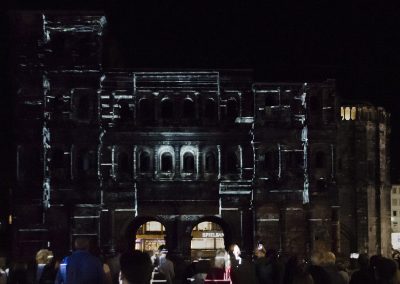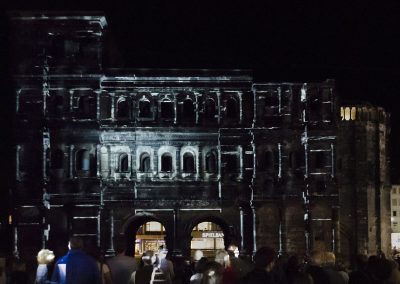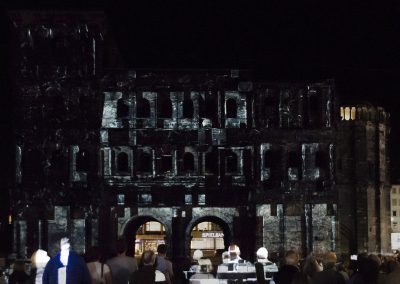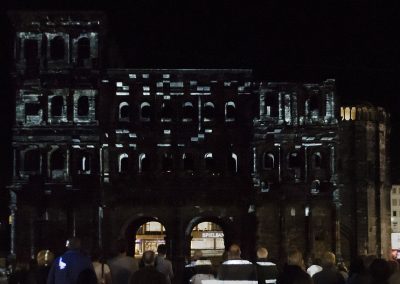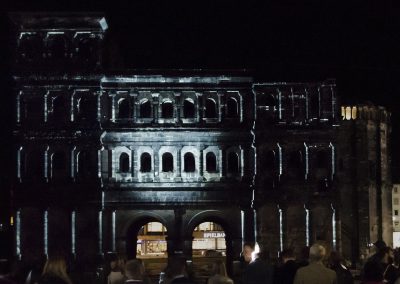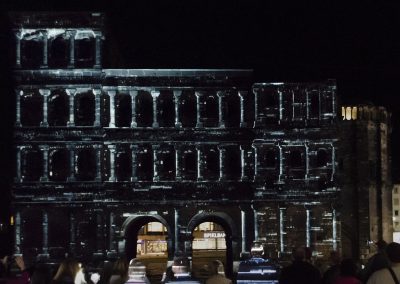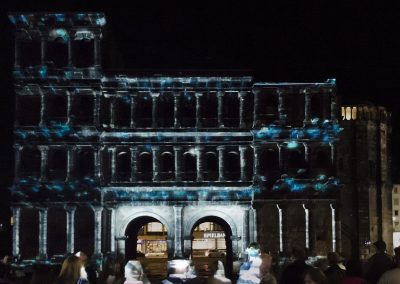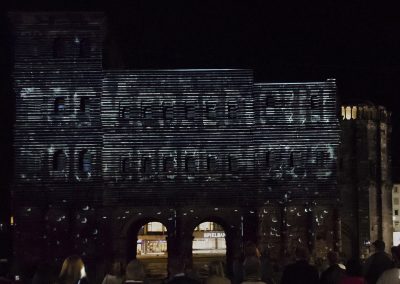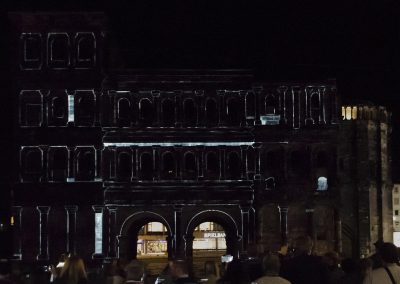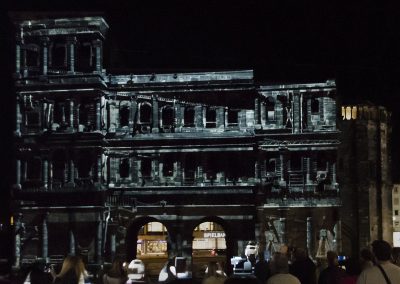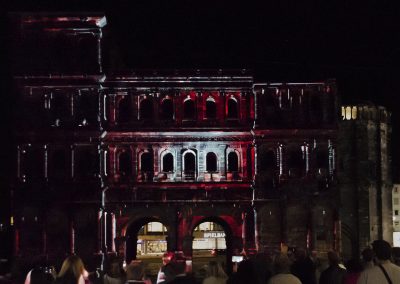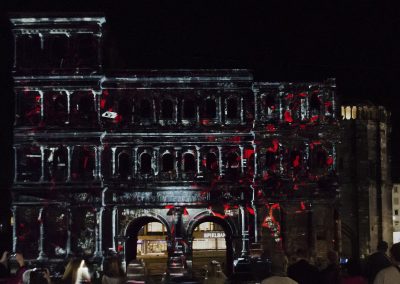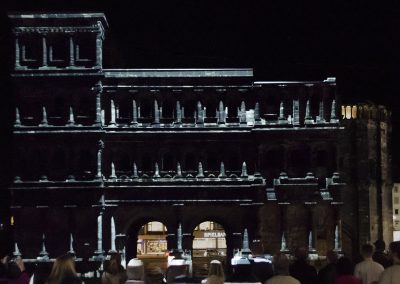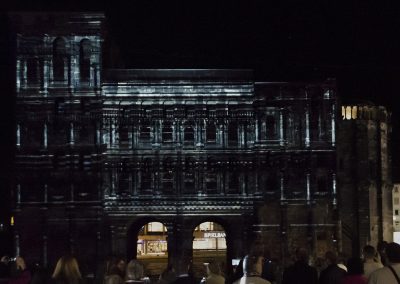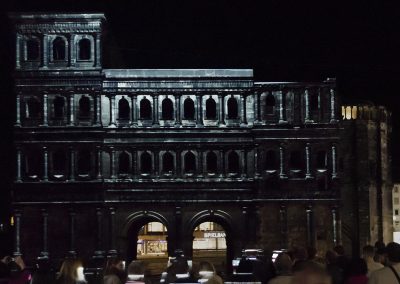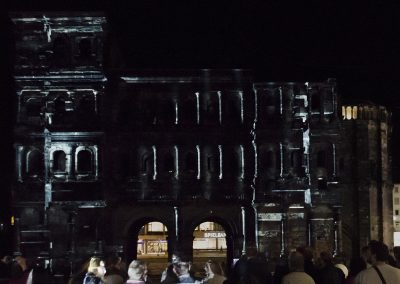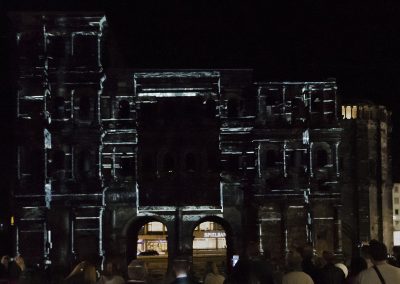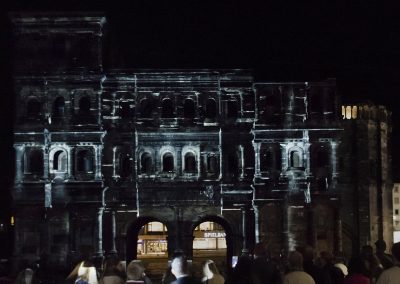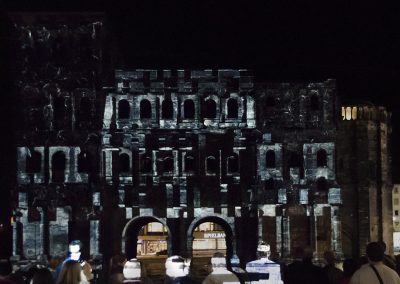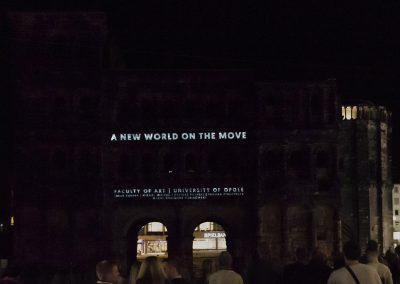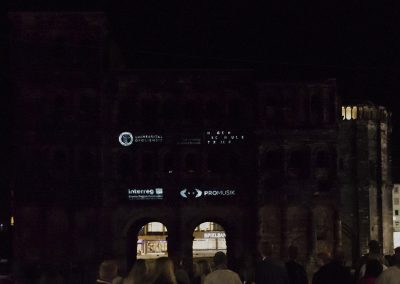Mapping Porta Nigra 2018
Design and Culture Days, Trewir 2018
12.10.2018 r. w ramach międzynarodowego sympozjum pt. A new world on the move na zabytkowej bramie miejskiej Porta Nigra prezentowana była projekcja mappingowa. Autorami projekcji są pracownicy Wydziału Sztuki Uniwersytetu Opolskiego: dr hab. Bartosz Posacki, mgr Michał Misiura, mgr Paulina Ptaszyńska, oraz absolwent mgr Jakub Kubara, autorem dźwięku jest Grzegorz Fijałkowski.
ŚWIAT W CIĄGŁYM RUCHU
Porta Nigra to najstarsza Rzymska budowla obronna na terenie niemiec i równocześnie największa zachowana rzymska brama miejska na północ od Alp. Jest ona symbolem trwałości i wagi łacińskiego dziedzictwa dla kultury europejskiej, a w wymiarze społecznym i indywidualnym symbolizuje trwałość ludzkiego wysiłku, pracy, stabilność i bezpieczeństwo. W świecie dzisiejszym wartości te są wciąż aktualne i równie ważne dla społeczeństw podobnie jak dwa tysiące czy dwieście lat temu gdy gdy w Trewirze rodził się Karol Marx.
Dziś Porta Nigra nie jest już bramą miejską i częścią czworobocznych fortyfikacji okalających starożytne Augusta Treverorum. Dziś stoi w centrum tętniącego życiem miasta i w centrum jednoczącego się kontynentu. Pozostaje szeroko otwarta i otoczona kosmopolitycznym, wielobarwnym tłumem wolnych ludzi. W swej obecnej formie jest doskonałą metaforą zmian zachodzących w świecie gdzie receptą na lepsze i bezpieczne jutro nie jest wznoszenie nowych murów, lecz empatia, odważne otwarcie na innych ludzi i pozostający w ciągłym ruchu świat.
Bogactwo znaczeń i idei możliwych do odczytania z tej liczącej sobie niemal dwa tysiące lat budowli jest dla nas punktem wyjścia do realizacji projekcji mappingowej opowiadającej o ciągłej zmienności świata, a także wadze i równoczesnej kruchości europejskich wartości pośród których najważniejsze to wolność, solidarność i tolerancja. Stabilność i niewzruszoność kamiennej budowli stanowi integralny element i podłoże do tworzenia wizji płynności i nieustannej zmienności które pomimo tego że wzajemnie kontrastowe uzupełniają się w barwnej kompozycji różnorodnych form i kształtów symbolizujących bogactwo kulturowe europy i świata.
WORLD IN CONTINUOUS MOVEMENT
Porta Nigra is the oldest Roman defensive building in Germany and at the same time the largest preserved Roman city gate north of the Alps. It is a symbol of the durability and importance of Latin heritage for European culture, and in the social and individual dimension it symbolizes the durability of human effort, work, stability and security. In today’s world, these values are still valid and as important for societies as they were two thousand or two hundred years ago when Karol Marx was born in Trier.
Today, Porta Nigra is no longer an urban gate and part of the four-sided fortifications surrounding the ancient Augusta Treverorum. Today, it stands in the center of a bustling city and in the center of a uniting continent. It remains wide open and surrounded by a cosmopolitan, multi-colored crowd of free people. In its present form, it is an excellent metaphor of changes taking place in a world where the recipe for a better and safe tomorrow is not to build new walls, but empathy, bold openness to other people and the constantly moving world.
The wealth of meanings and ideas that can be read from this nearly two thousand-year-old building is for us the starting point for the mapping projection of continuous world volatility, as well as the weight and simultaneous fragility of European values, the most important of which are freedom, solidarity and tolerance. The stability and impertinence of a stone structure is an integral element and a foundation for creating visions of fluidity and constant variability that despite being mutually contrasting, complement each other in a colorful composition of various forms and shapes symbolizing the cultural wealth of Europe and the world.
Fot. P. Ptaszyńska
